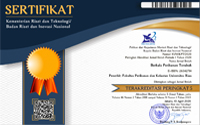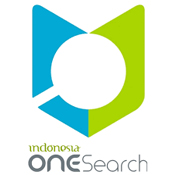Comparative Study on Stomach Content Analysis of Caged and Free Living Puntius schwanefeldii in the Koto Panjang Dam, Kampar Regency Riau
Abstract
Keywords
Full Text:
PDFReferences
Effendie. 2002. Biologi Perikanan. Yayasan Pustaka Nusantara. Yogyakarta.
Fishbase. 2022. Puntius schwanefeldii. www.fishbase.org. Akses: 30 September 2022.
Isa, M. M., A. S. Md-Shah., N. Baharuddin., M. Adlan., A. Halim. 2012. Population Dynamic of Tinfoil Barb, Barbonymus schwanefeldii (Bleeker, 1853) in Pendu Reservoir, Kedah. Journal of Biolgy, Agriculture and Healthcare. 2(5): 55-69.
Kottelat, M., A. J. Whitten., S. N. Kartikasari./ S. Wirjoatmodjo. 1993. Freshwater Fishes of Western Indonesia and Sulawesi. Barkely Book Pte Ltd, Terrer Road. Singapore.
Manik., R. R. D. S., J. Arleston. 2021. Nutrisi dan Pakan Ikan. Widina Bhakti Persada Bandung. Bandung.
Nur, M. 2006. Evaluassi Pengelolaan Waduk PLTA Koto Panjang Sebagai Upaya Pelestarian Fungsi WAduk yang Berkelanjutan. IPB. Bogor
Saanin, H. 1984. Taksonomi dan Kunci Identifikasi Ikan. Bina Cipta. Jakarta.
Sari, D., I. J. Zakaria., W. Novrianto. 2016. Struktur Komunitas Ikan Pada Lubuk Larangan di Desa Rantau Pandan Kabupaten Bungo, Jambi. Jurnal Metamorfosa. 3(2): 82-85.
Siagian, M. 2010 . Strategi Pengembangan Keramba Jaring Apung Berkelanjutan di Waduk PLTA Koto Panjang. Jurnal Perikanan dan Kelautan. Fakultas Perikanan dan Ilmu Kelautan Univ. Riau. 15(2):145-160.
Simarmata, A. H., M. Siagian., dan C. Sihotang. 2013. Pengelolaan Waduk Koto Panjang yang Berkelanjutan Berdasarkan Status Trofik dan Badan Air. Laporan Penelitian Unggul Perguruan Tinggi. Lemlit. Univ Riau. Pekanbaru.
Sjefei, D. S. 2001. Kebiasaan Makan dan Faktor Kondisi Ikan Kurrisi (Nemiptrus tambulolde Blkr) di Perairan teluk Labuah. Jurnal Ikhtiologi Indonesia Fakultas Perikanan dan Ilmukelautan IPB. 1(1): 7-11.
Sumiarsih, E., O. S. Djunaedi., Y. Hhahiyat., Zahidah Z., 2015. Hubungan antara Keramba JAring Apung dengan Jenis Makanan yang Terdaoat pada Lambung Ikan Endemik di Waduk Koto Panjang, Riau. Indonesia Journal Applied Sciences. 5(1): 45-48.
Warsa, A., A. S. N. Krimono., A. Nurfiarini. 2007. Sumber Daya Perikanan Tangkap di Waduk Koto Panjang, Riau. Loka Riset Pemacu Stock Ikan.2(3):93-97.
Windarti, W. 2020. Keterampilan Dasar Biologi Perikanan. Oceanum Press. Pekanbaru.
DOI: http://dx.doi.org/10.31258/terubuk.51.1.2133-2140
Refbacks
- There are currently no refbacks.
Copyright (c) 2023 Anggi Erywiyani Hasibuan, Deni Efizon, Efawani Efawani

This work is licensed under a Creative Commons Attribution 4.0 International License.












